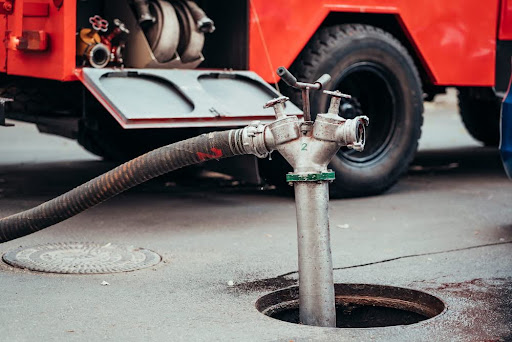Sewer line issues are among the most dreaded and disruptive problems homeowners can face.
A malfunctioning sewer line can lead to unpleasant odors, sewage backups, and even structural damage to your property if left untreated.
In this comprehensive guide, we’ll explore the various aspects of sewer line repair, from identifying common problems to understanding repair options and finding the right professionals to get the job done.
Understanding Sewer Line Problems
1. Signs of Trouble
Identifying sewer line issues early can save you from costly repairs and extensive damage. Look out for these warning signs:
- Foul Odors: Persistent sewer odors around your property could indicate a leak or blockage in the sewer line. These odors may be especially noticeable in your yard, basement, or around drains.
- Slow Drains: If multiple drains in your home are draining slowly, it may signal a clog or damage to the sewer line. Pay attention to sinks, showers, toilets, and floor drains for sluggish drainage.
- Sewage Backups: Backups in toilets or drains, especially after using multiple plumbing fixtures, suggest a blockage or obstruction in the sewer line. These backups may result in sewage coming up through drains or toilets, creating a messy and unsanitary situation.
2. Common Causes of Sewer Line Damage
Several factors can contribute to sewer line problems, including:
- Tree Roots: Tree roots seeking moisture and nutrients can infiltrate sewer pipes, causing cracks, leaks, and blockages. As trees mature, their roots can expand and exert significant pressure on underground pipes, leading to damage and infiltration.
- Aging Infrastructure: Over time, sewer lines can deteriorate due to age, corrosion, and wear and tear, leading to leaks and collapses. Many older homes have sewer lines made of materials such as clay, cast iron, or Orangeburg pipe, which are prone to degradation over time.
- Foreign Objects: Flushing non-biodegradable items or pouring grease down drains can lead to clogs and damage in sewer lines. Common culprits include paper towels, feminine hygiene products, grease, and cooking oil, which can accumulate and create blockages within the pipe.
Sewer Line Repair Options
1. Traditional Excavation
Traditional excavation involves digging up the damaged section of the sewer line to repair or replace it. While effective, this method can be disruptive and costly, requiring extensive labor and restoration work.
Excavation is typically necessary for severe damage or when trenchless methods are not feasible due to accessibility or other factors.
2. Trenchless Repair
Trenchless repair techniques offer a less invasive alternative to traditional excavation. These methods include:
- Pipe Lining: A flexible liner coated with resin is inserted into the damaged pipe, where it adheres to the interior, creating a new, durable pipe within the old one. Pipe lining can effectively seal cracks, reinforce deteriorating pipes, and prevent root intrusion without the need for excavation.
- Pipe Bursting: A new pipe is pulled through the old, damaged pipe, breaking it apart and replacing it with a seamless, durable pipe. Pipe bursting is particularly useful for replacing severely damaged or collapsed pipes without the need for extensive excavation. This method is often faster and more cost-effective than traditional dig-and-replace methods.
Trenchless repair minimizes disruption to your property, reduces excavation costs, and typically requires less time to complete.
However, it may not be suitable for all situations, so it’s essential to consult with a qualified professional to determine the best approach for your sewer line repair Miami needs.
Choosing a Sewer Line Repair Professional
1. Experience and Expertise
When selecting a contractor for sewer line repair, consider their experience and expertise in handling similar projects.
Look for professionals with a proven track record of successful repairs and satisfied customers.
Experienced contractors will have the skills and knowledge to accurately diagnose sewer line problems and recommend appropriate repair solutions.
2. Licensing and Insurance
Ensure that the contractor is properly licensed and insured to perform sewer line repair in your area. This protects you from liability in case of accidents or damages during the repair process.
Licensed professionals are required to adhere to industry standards and regulations, ensuring the quality and safety of the repair work.
3. Transparent Pricing and Estimates
Obtain detailed quotes from multiple contractors, and be wary of unusually low or high estimates. A reputable contractor will provide transparent pricing and explain the scope of work involved in the repair.
Ask for a written estimate that includes all labor, materials, and potential additional costs to avoid surprises once the project begins.
4. Warranty and Guarantees
Inquire about warranties or guarantees on the repair work and materials used. A warranty provides peace of mind knowing that the contractor stands behind their workmanship and will address any issues that may arise after the repair.
Be sure to review the terms and conditions of the warranty, including any exclusions or limitations, to understand your coverage fully.
Conclusion
Navigating sewer line repair can be a daunting task, but armed with the right knowledge and guidance, you can address issues promptly and effectively.
By understanding the signs of sewer line problems, exploring repair options, and choosing a qualified professional, you can restore the functionality and integrity of your sewer system, ensuring the continued comfort and safety of your home.
Remember, early intervention is key to minimizing damage and avoiding costly repairs down the line.
Don’t hesitate to seek assistance from trusted professionals to resolve sewer line issues and safeguard your property for years to come.


